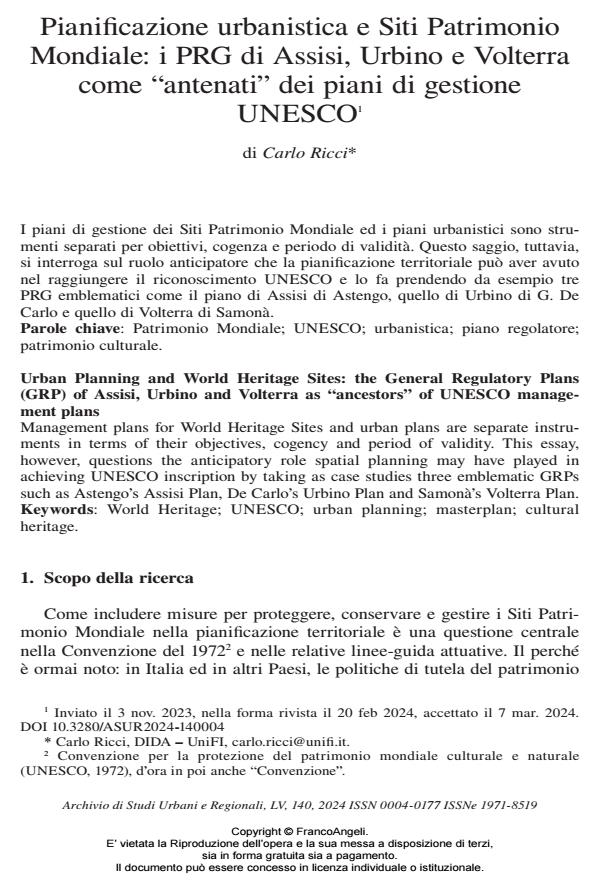Pianificazione urbanistica e Siti Patrimonio Mondiale: i PRG di Assisi, Urbino e Volterra come “antenati” dei piani di gestione UNESCO
Journal title ARCHIVIO DI STUDI URBANI E REGIONALI
Author/s Carlo Ricci
Publishing Year 2024 Issue 2024/140
Language Italian Pages 22 P. 80-101 File size 214 KB
DOI 10.3280/ASUR2024-140004
DOI is like a bar code for intellectual property: to have more infomation
click here
Below, you can see the article first page
If you want to buy this article in PDF format, you can do it, following the instructions to buy download credits

FrancoAngeli is member of Publishers International Linking Association, Inc (PILA), a not-for-profit association which run the CrossRef service enabling links to and from online scholarly content.
Management plans for World Heritage Sites and urban plans are separate instruments in terms of their objectives, cogency and period of validity. This essay, however, questions the anticipatory role spatial planning may have played in achieving UNESCO inscription by taking as case studies three emblematic GRPs such as Astengo’s Assisi Plan, De Carlo’s Urbino Plan and Samonà’s Volterra Plan.
Keywords: World Heritage; UNESCO; urban planning; masterplan; cultural heritage.
Carlo Ricci, Pianificazione urbanistica e Siti Patrimonio Mondiale: i PRG di Assisi, Urbino e Volterra come “antenati” dei piani di gestione UNESCO in "ARCHIVIO DI STUDI URBANI E REGIONALI" 140/2024, pp 80-101, DOI: 10.3280/ASUR2024-140004